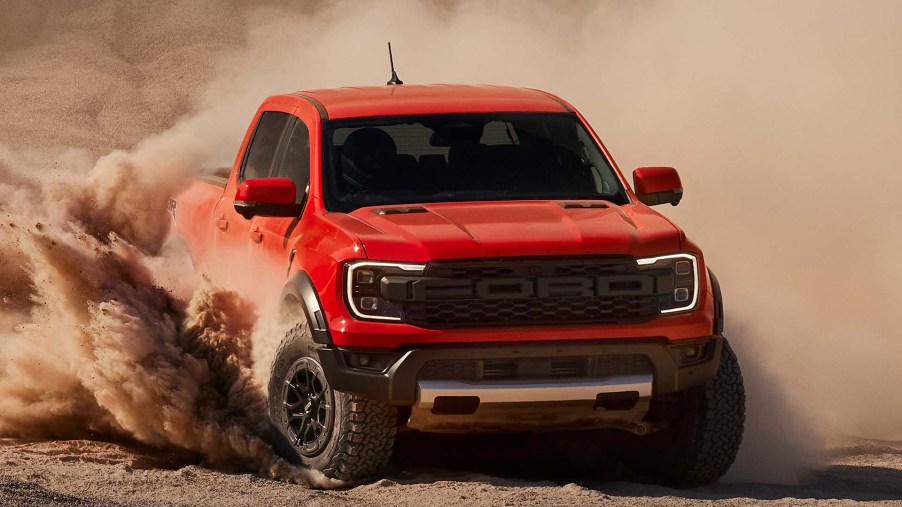
Why the Ford Ranger Plug-in Hybrid Could Be a Hit in the U.S.
The updated 2024 Ford Ranger arrives soon. With a revised chassis, handsome styling, and an optional turbo V6, the new Ranger is a midsize pickup for the 21st century. And with a plug-in hybrid electric vehicle (PHEV) version reportedly in the works, this American pickup truck could attract even more customers.
Let’s take a look at the potential plug-in Ford Ranger and why it could be a hit in the U.S.
Ford Ranger plug-in hybrid: one of a kind
The new-for-2024 Ford Ranger takes the nameplate into modern territory with mini-F-150 looks, advanced powertrains, and improved capability. And Ford’s even making a Raptor version, for off-road ability akin to racing machinery. The new Ranger’s a big step forward.
And now, according to Ford Authority, a PHEV version may be in the works. That’s significant for several reasons.
PHEV’s bring unique advantages to everyday drivers. By using an electric motor(s) and an internal combustion engine, plug-in hybrids offer electric-only driving, and can drive long distances without recharging. That’s a useful combo.
Currently, nobody in the U.S. makes a PHEV pickup truck. Consumers have to choose all-electric or traditional gas-powered versions. While either type offers excellent utility and performance, there are tradeoffs when choosing between the two.
All-electric pickups have instantaneous torque and emissions-free driving. But they also have limited range and require lengthy recharges. Installing a home charging station costs money, and planning trips around range estimates can be a hassle. And EV trucks carry premium prices.
On the other hand, gas-powered trucks can drive far and wide and fill up fast. Range limits don’t interrupt long trips, and a classic engine note makes driving more fun. For enthusiasts, an internal combustion engine truck may be the way to go.
But what if a pickup driver wants the best of both worlds?
The unique advantages of a PHEV truck
A plug-in hybrid electric pickup—like the rumored Ford Ranger plug-in hybrid—would provide solid advantages over a gas-powered version, and likely cost less than a fully-electric model.
Filling up can get expensive. Especially on trucks with large fuel tanks, visiting the gas station can put a dent in your bank account. That’s why a fuel-saving PHEV pickup would be so convenient.
With their fully-electric driving mode, PHEVs let people make short trips without burning gas. When they arrive home, drivers can just plug in and recharge, then do it all over. Over time, that can add up to big savings.
And when driving as hybrids, PHEVs are highly efficient. One example is the Toyota RAV4 Prime at 38 mpg combined.
PHEVs produce fewer emissions, with some earning super ultra-low emissions vehicle (SULEV) status. And with global warming concerns on the rise, it’s always nice to reduce your carbon footprint.
These benefits not only increase efficiency and save money but make for a more usable, all-around vehicle. Switching between electric and gas modes gives drivers two vehicles in one, something that’s especially important on function-focused pickups. That’s why a PHEV Ranger could be a sales success.
The 2024 Ford Ranger is a heavily updated pickup that competes with top picks like the Toyota Tacoma and Chevy Colorado. The Ranger’s new look and revised mechanicals make it a thoroughly modern ride. And a PHEV version—combing fuel efficiency and convenience—would only improve the Ranger’s selling points. That could make it a popular pick.



